Forest fires in Indonesia have resulted in a smoky haze that is blanketing the region and affecting neighbouring Malaysia and Singapore.
The BBC explains what causes the haze, and what makes it such a contentious issue.
What's causing the haze?
Both the haze and the controversy around it have intensified in recent years.
Every year Indonesia sees agriculture fires in Riau province in East Sumatra, South Sumatra, and parts of Kalimantan.
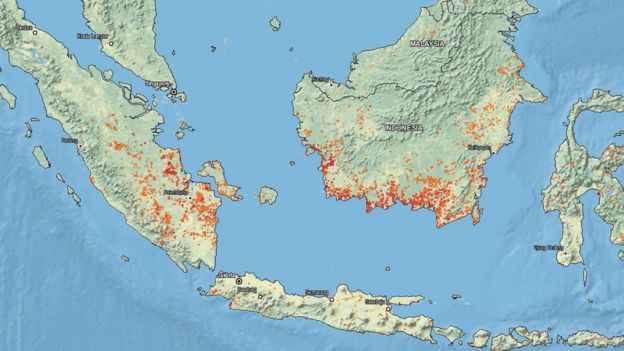 NASA EOSDIS
NASA EOSDIS
The fires are said to be caused by corporations in the palm oil, pulp and paper industries, as well as small-scale farmers who use the illegal slash-and-burn method to clear vegetation.
The fires often spin out of control and spread into protected forested areas.
The problem has only accelerated as the cleared land becomes drier, which in turn becomes more highly likely to catch fire the next time round.
Why is it an issue?
The haze gets blown north and westwards across affected Indonesian provinces, as well as towards Malaysia and Singapore, causing a significant deterioration in air quality.
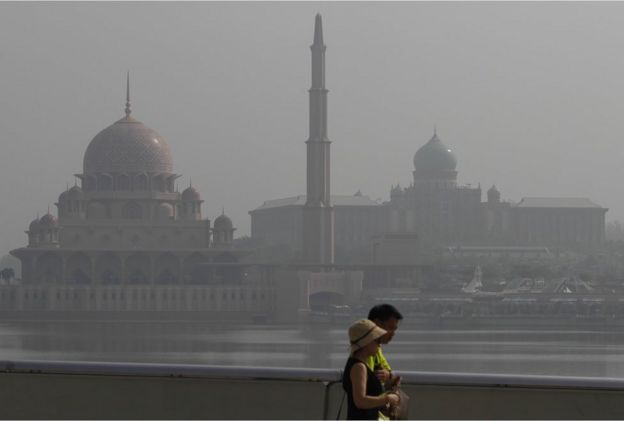 AP
AP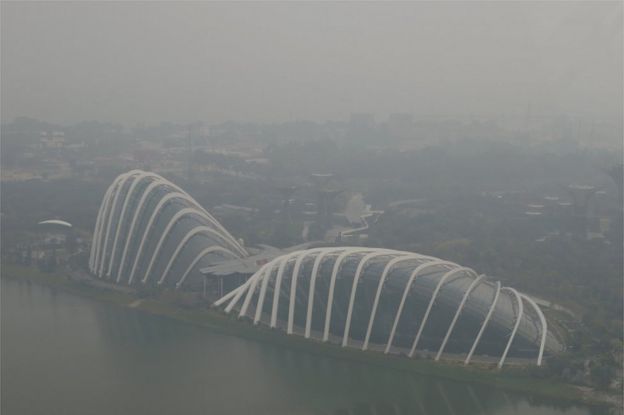 Reuters
Reuters
It can be a health hazard, and at its peak it has prompted school closures, flight cancellations and virtual shutdowns of towns and cities.
Singapore and Indonesia use the Pollutants Standards Index (PSI) to measure air quality, while Malaysia uses the similar Air Pollutants Index (API). On both indices, a reading that is above 100 is classified as unhealthy and anything above 300 is hazardous.
Indonesia recently declared a state of emergency in Riau province - one of its towns, Pekanbaru, saw a PSI reading of 984.
Malaysia declared a state of emergency in 2013, when a southern district saw readings of more than 750 API.
What makes it so dangerous?
Besides irritating the respiratory tract and the eyes, pollutants in the haze can cause serious long-term damage to health.
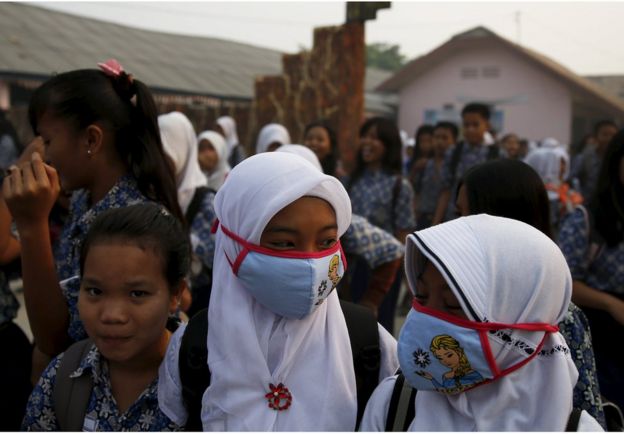 Reuters
Reuters
The indices used to measure air quality in the region usually measure particulate matter (PM10), fine particulate matter (PM2.5), sulphur dioxide, carbon monoxide, nitrogen dioxide and ozone.
PM2.5 is considered the most dangerous as it can enter deeper into the lungs. It has been associated with causing respiratory illnesses and lung damage.
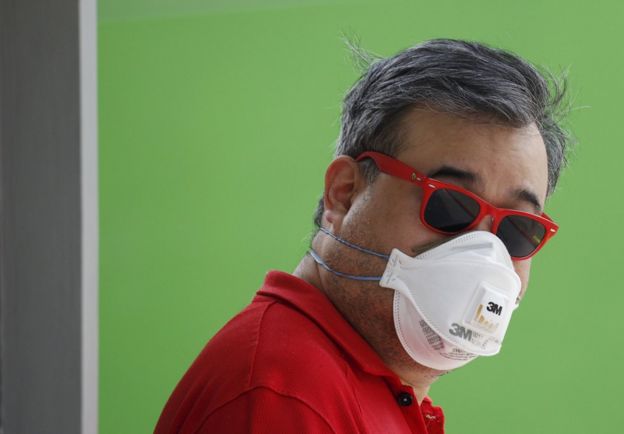 Reuters
ReutersWhat is being done to stop it?
Indonesia has been dumping millions of litres of water in affected areas and has sent in the army to help firefighters put out the fires.
Indonesia and Malaysia have also conducted cloud-seeding to induce rain, while Singapore has pledged assistance to help put out fires.
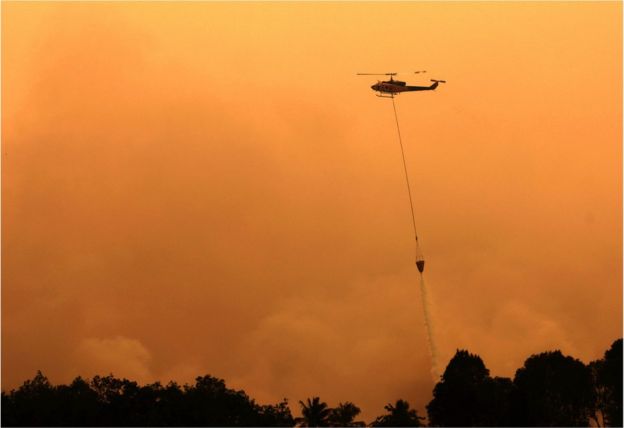 EPA
EPA
Indonesia has for years promised to step up enforcement. Under President Joko Widodo, it has named 10 corporations as suspects, and said it is investigating more than 100 individuals.
In 2002, all 10 South East Asian countries signed an agreement to combat the issue through greater monitoring and encouragement of sustainable development, but efforts have been limited.
Why has it been so difficult to stop?
Indonesia has long struggled to police the vast rural expanse in Sumatra and Kalimantan.
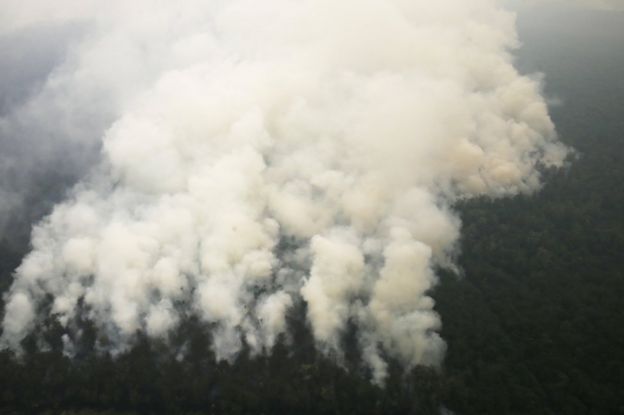 Reuters
Reuters
But Indonesia and environment rights activists also say it is not entirely to blame, as some of the corporations accused of illegal burning have Malaysian and Singaporean investors.
Singapore in 2014 passed a set of laws that allow it to prosecute individuals and companies that contribute to the haze, but it remains unclear how this law could be enforced.
There have also been name-and-shame campaigns and calls to boycott the products of the companies said to be contributing to the haze.
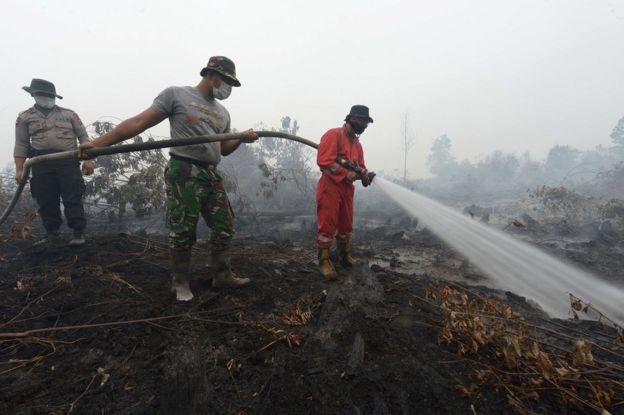 AFP
AFP
In the meantime Indonesian authorities continue to struggle to put out the fires, many of which have flared up on flammable and dry peat-rich areas.
A peat fire is difficult to put out as it can burn underground for months, and requires a lot of water to extinguish. Fires can spread underground and spring up in other places later.http://www.bbc.com/news/world-asia-34265922
No comments:
Post a Comment